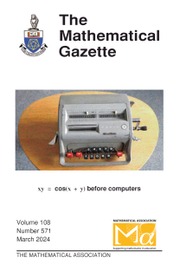No CrossRef data available.
Article contents
An Application of Bessel Functions to a Problem in Optical Resolution*
Published online by Cambridge University Press: 03 November 2016
Extract
Whatever theory is finally adopted for the propagation of light, there will always remain the interesting fundamental problem as to how far an object is exactly reproduced by an optical system. In this paper, the enquiry will be considered in its simplest form, and only the simplest types of objects can be considered. Taking the wave theory, let us consider the reproduction of an infinitely distant self-luminous point source, such as a star, through an optical system, such as a telescope. Sir George Airy investigated this case in 1834 ; he shewed what W. Herschel had recorded in 1782, that the image in the focal plane f of the optical system consisted of a central concentration of light, surrounded by light rings of rapidly diminishing intensity (see Fig 2), and gave formulae to shew the falling off in intensity of the light away from the centre of the image. This disc of light, then, is the approximation to the point-image of geometrical optics. The deformation is due to the distortion of the sphericity of the light waves making the image by diffraction at the aperture of the system. As in the propagation of wireless waves, however, diffraction is not the only cause of distortion.
Information
- Type
- Research Article
- Information
- Copyright
- Copyright © Mathematical Association 1925
Footnotes
A paper read at the Annual Meeting of the Mathematical Association, January 6, 1925.
References
page 425 note † See C. Pendlebury’s Syttem of Lenses.
page 431 note * The corresponding rule appears in Dr. W. F Sheppard’s article on “Mensuration,” Encyclopaedia Britannica, vol. 18.

